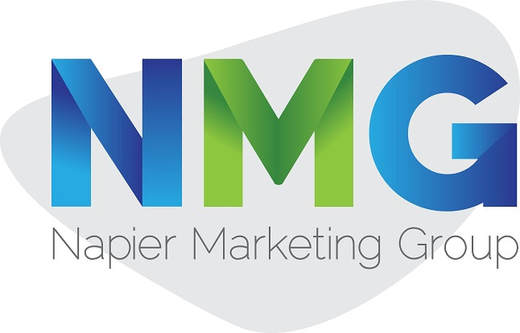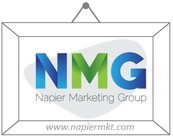Tips for Better IT Equipment Inventory Management
IT assets are not just what you may think they are – computers, servers, etc. The term IT assets actually covers all the equipment found in an IT environment, like desks, and chairs. To make the most out of all your assets, and to have an easier time keeping track of all your assets, continue reading.
What is IT asset lifecycle management
Every asset has its life cycle – the stages of their use. From the time of procurement, until the asset retirement or expiration, it will go through several status changes. Having important information about the lifecycle stage of your assets will enable you to make timely maintenance checks, or even replacements, depending on the stage they are in. If you know when a certain piece of equipment or inventory will have to be replaced, you have enough lead time to replace it. If you are unaware of the “life expectancy” of your assets, then you risk having to make quick replacements, which may cost you money and quality. The same goes for IT assets. They also have their lifecycle changes, and these changes are also reflected in the financial, and physical data associated with the asset. If you just track and record these changes, you cannot say that you are successfully managing the asset.
Make a plan
Having a structured lifecycle management plan is essential if you want the best possible ROI for your IT assets. There are a few steps you need to take towards successfully managing your assets’ lifecycle, and the first is to create an effective strategy. All of your coworkers should have a shared vision on program implementation, even those at the executive level. This means that all of you should have a shared knowledge about what assets you possess, their importance, and the future costs and values, so that your company gets its money’s worth out of them. A good management plan lets you examine what the expected costs and values of an asset might be, and how much it is being utilized. This is best done with IT equipment lifecycle management advisors, who can help you provide solutions at all stages. Together you can calculate if the asset is worth keeping, or should you dispose of it, and you can even generate funding from the sale.
Planning a strategy
Just like we mentioned above, all assets have their lifecycle, and this cycle has different stages. For your management plan to be successful, you have to work as a team towards the common goal. This means that there should be people working equally hard in all the asset lifecycle stages. Each role and responsibility must be clearly defined, in order to achieve the asset management objectives. Only then can you start collecting info on each asset, and determine long-term solutions for each asset.
Acquisition or procurement
What is IT asset lifecycle management
Every asset has its life cycle – the stages of their use. From the time of procurement, until the asset retirement or expiration, it will go through several status changes. Having important information about the lifecycle stage of your assets will enable you to make timely maintenance checks, or even replacements, depending on the stage they are in. If you know when a certain piece of equipment or inventory will have to be replaced, you have enough lead time to replace it. If you are unaware of the “life expectancy” of your assets, then you risk having to make quick replacements, which may cost you money and quality. The same goes for IT assets. They also have their lifecycle changes, and these changes are also reflected in the financial, and physical data associated with the asset. If you just track and record these changes, you cannot say that you are successfully managing the asset.
Make a plan
Having a structured lifecycle management plan is essential if you want the best possible ROI for your IT assets. There are a few steps you need to take towards successfully managing your assets’ lifecycle, and the first is to create an effective strategy. All of your coworkers should have a shared vision on program implementation, even those at the executive level. This means that all of you should have a shared knowledge about what assets you possess, their importance, and the future costs and values, so that your company gets its money’s worth out of them. A good management plan lets you examine what the expected costs and values of an asset might be, and how much it is being utilized. This is best done with IT equipment lifecycle management advisors, who can help you provide solutions at all stages. Together you can calculate if the asset is worth keeping, or should you dispose of it, and you can even generate funding from the sale.
Planning a strategy
Just like we mentioned above, all assets have their lifecycle, and this cycle has different stages. For your management plan to be successful, you have to work as a team towards the common goal. This means that there should be people working equally hard in all the asset lifecycle stages. Each role and responsibility must be clearly defined, in order to achieve the asset management objectives. Only then can you start collecting info on each asset, and determine long-term solutions for each asset.
Acquisition or procurement
|
As we mentioned, all IT assets have different stages of their lifecycle. The first obviously being procurement or acquisition. However, before procurement, you need to plan out what it will be used for, estimated cost, etc. This phase also includes asset design, budget creation, long-term financial planning, and maintenance plans. Also, before procuring a particular asset, you should view various options, compare pricing, and maybe even have a trial period. Only then can you install or have the asset delivered.
|
Operation and maintenance
After you have procured the asset, and installed it properly, the time has come to put it to good use. During this time, routine maintenance and necessary upgrades are paramount if you want to get the most out of your asset. This phase is usually the longest, and consequently, it requires the most attention.
Disposal or replacement
When the asset reaches its expiration date, or it is no longer cost-effectively helping your business, it is time to retire the asset or dispose of it in a sustainable manner. IT assets are especially tricky, since you have to think about disposing of the equipment properly, with minimal risk to the environment, but all the while thinking of security. You do not want to put your company at risk because you took this phase too lightly.
Just like we mentioned earlier, if you want to get the most out of your assets and have the best possible ROI, simply tracking your asset inventory is not enough. With a proper IT asset management program, you will best be able to delegate responsibility at all stages of the asset lifecycle. Proper management starts at the procurement planning stage, and it should be maintained throughout operation time and even at asset disposal. This will result in better control of your IT environment, cost savings, more effective deployment of assets, and more.
After you have procured the asset, and installed it properly, the time has come to put it to good use. During this time, routine maintenance and necessary upgrades are paramount if you want to get the most out of your asset. This phase is usually the longest, and consequently, it requires the most attention.
Disposal or replacement
When the asset reaches its expiration date, or it is no longer cost-effectively helping your business, it is time to retire the asset or dispose of it in a sustainable manner. IT assets are especially tricky, since you have to think about disposing of the equipment properly, with minimal risk to the environment, but all the while thinking of security. You do not want to put your company at risk because you took this phase too lightly.
Just like we mentioned earlier, if you want to get the most out of your assets and have the best possible ROI, simply tracking your asset inventory is not enough. With a proper IT asset management program, you will best be able to delegate responsibility at all stages of the asset lifecycle. Proper management starts at the procurement planning stage, and it should be maintained throughout operation time and even at asset disposal. This will result in better control of your IT environment, cost savings, more effective deployment of assets, and more.




